Kanonkop is one of the most famous wine producers in South Africa. When the winery’s head winemaker Abrie Beeslaar came to Sweden he met BKWine Magazine’s reporter Carl-Erik Kanne and presented a selection of his wines.
Abrie Beeslaar is a very well-known figure on South Africa’s wine scene and is focused on getting as high quality as possible in their wines with a clear character from the grape variety and microclimate.
He is the head winemaker at the Kanonkop winery (Cannon Hill), which is about 100 years old and has for many generations been run by the same family (Sauer / Krige), and is currently run by the brothers Paul and Johann Krige. The property is considered to produce some of South Africa’s best red wines thanks to talented winemakers of which Abrie Beeslaar is the third since 1973 when they started bottling under their own name.
Abrie Beeslaar stressed the importance of control of the entire process from pruning vines to the shipping of the bottles to ensure a high quality of the wines, whether they are volume wines or prestige wines. For example, he mentioned the sometimes strong winds that may have erratic impact on especially the young buds during South Africa’s spring, balancing the amount of sun on the grapes, maceration in small vats with frequent punch-down for optimal skin contact and constant control of the development of each individual barrel during ageing. An artisan approach characterizes all activities.
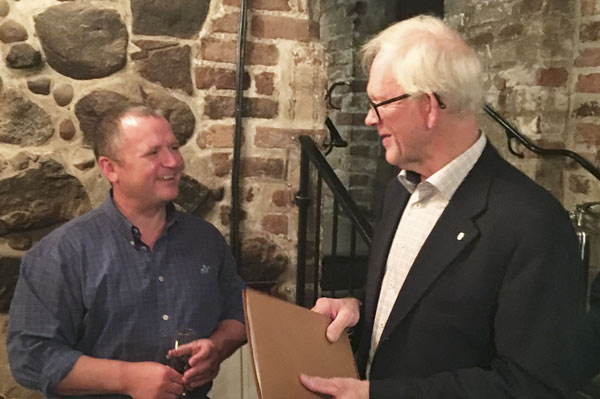
They have e.g. “bush vines”, a pruning method that makes the vine look like a low shrub (bush) or a goblet, which is why the method in French is called Gobelet. No wires are used for the vines to climb on. He explained that the method is widely used because it improves protection against the strong winds that are frequent, and gives smaller size grapes and thus more concentration.
Kanonkop has 140 hectares of which about 100 hectares are planted with mainly cabernet sauvignon (35%), and the typical South African grape Pinotage (50%). After many years of experimentation they have come to the conclusion that these particular grapes are the ones best suited to Kanonkops soils. Other grapes, Merlot, Cabernet Franc and Petit Verdot, account for the rest of the production.
Their eight vineyards are located at the foot of Mount Simonsig in Stellenbosch and has mostly a southwest position at altitudes between 60 and 120 meters. Pinotage is grown at the top and at the bottom cabernet sauvignon.
The climate is warm with cool sea breezes (Mediterranean climate) which in combination with the soil provides ideal conditions for the production of fine wines.
In total there were 14 wines from Kanonkops range to taste and from three of the main ranges there was a vertical tasting of wine back to the oldest, a 1991.
I will not here deal with the wines made from Pinotage, as my colleague Michael Karlin take care of in another article.
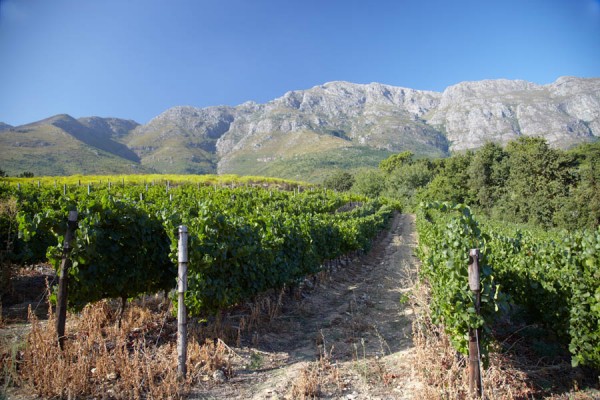
The Kadette range
This is the “volume wines” range which has become very popular and in 2014 they produced 140,000 cases of this series. The grapes are both grown on their own vineyards and sourced from controlled properties.
Kanonkop Kadette
Pleasant, aroma with some spice, taste of pure fruit. Felt like a well-made entry-level wine to have in the cellar for red meat dishes. The wine is a so-called Cape Blend, with Pinotage, Cabernet Sauvignon, Merlot and Cabernet Franc among the ingredients. Have some aging potential.
Estate Series
The grapes for these wines have been hand-picked from vines with an average age of 24 years and have grown in granite soils with a high clay content which preserves moisture. The grapes macerate 5.5 days in open concrete vats and the “cap” (grape skin material) is punched down every two hours. The wine is aged for 24 months in French oak barrels, 50% new. Very age-worthy wines.
Kanonkop Estate Cabernet Sauvignon 2012
Estate Cabernet Sauvignon 2012 was still a young wine, but there was good acidity, clean fruit and fine substance with supple tannins. Will benefit from a few years in the cellar. According Abrie Beeslaar 2012 was a dry year that gave superb cabernet sauvignon that can develop into something excellent. Also contains 3% Cabernet Franc. Ca 25 euro
Kanonkop Estate Cabernet Sauvignon 2003
2003 was Abrie Beeslaars favourite year and the wines were, according to him quite European in style. This wine was very well made with nice balance and lovely ripe fruit. Perfect now to a stew. 100% Cabernet Sauvignon.
Kanonkop Estate Cabernet Sauvignon 2001
2001 had some smokiness on the nose and felt more closed than the 2003. Good structure. Needs a grilled rib-eye steak on the plate. According Abrie Beeslaar 2001 was a difficult year, but he thought that the wine could really have been mature. Even here it is 100% cabernet sauvignon, and 60% aged in new French oak for 24 months.
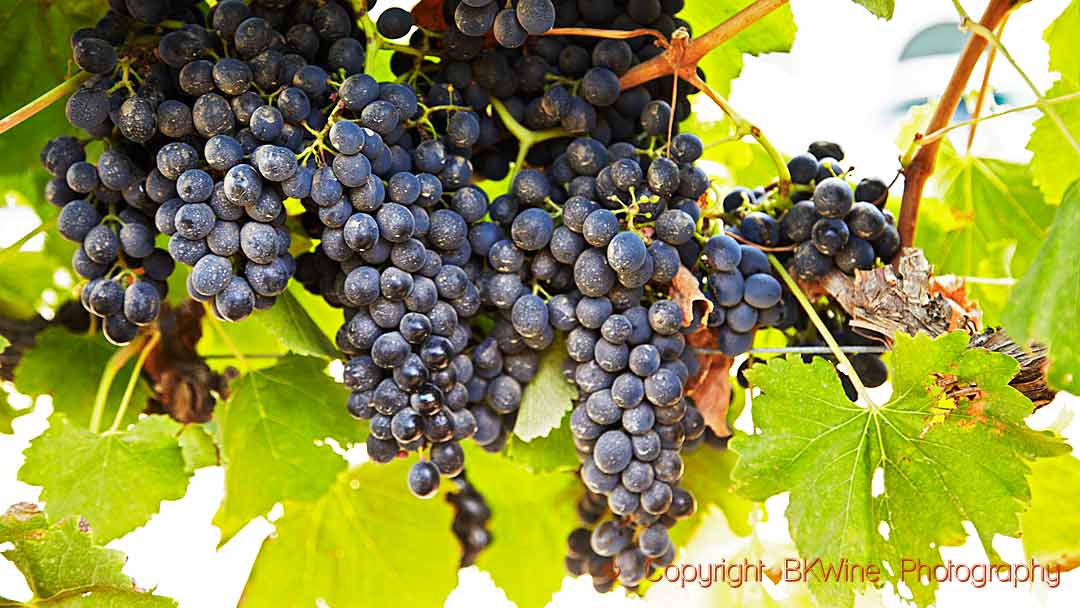
Estate Paul Sauer
A typical Bordeaux blend of Cabernet Sauvignon, Cabernet Franc and Merlot.
The average age of the vines are as the previous series, and the vinification is also very similar. Here, however, the wine is aged only on new French oak barrels for 24 months. Very good aging potential.
Kanonkop Estate Paul Sauer 2011
Kanonkop Estate Paul Sauer 2011 comes from the windiest year in 48 years, it was very dark red in colour, had some smokiness on the nose, and clean nice fruit with balanced tannins. Felt elegant in the mouth. Some spiciness in the finish. But not intrusive alcohol. Ca 28 euro.
Kanonkop Estate Paul Sauer 2004
2004 had reached good maturity and was soft, fruity and elegant and had developed well according Abrie Beeslaar.
Kanonkop Estate Paul Sauer 2001
2001 had a distinct smokiness, good fruit and fine structure. A very nice wine for lamb or beef dishes now, but can safely be age for some time. According Abrie Beeslaar this was a decent vintage.
Kanonkop Estate Paul Sauer 1994
1994, finally, had retained much fruit and power, but will develop no further. The wine still felt very pleasurable and can easily compete with many Bordeaux with similar age. Abrie Beeslaar rated it as average fruit, but less weight than the later vintages.
One must in these comparisons between the years remember that the winemaking focus has changed over time.
From wines requiring ageing to more fruit-driven wines with less powerful tannic structure and it obviously makes direct comparisons difficult.
Kanonkop Estate Paul Sauer 2013
2013 was served separately as one of two wines with the food, a boef Bourguignon. Youthful fruit with high acidity that I felt went less well with the food than the 2014 Kanonkop Black Label Pinotage (Kanonkop’s prestige wine) which was the second wine to the food. The latter balanced the taste of the food better.
In summary, an interesting wine maker with good wines.
Carl-Erik Kanne is a long time wine enthusiast and fervent wine taster. He reports from wine tastings and wine events in Stockholm for BKWine Magazine.
[box type=”info” style=”rounded” border=”full”]South Africa has a lot of very exciting things to offer the wine enthusiasts. Enormous progress has been made since apartheid ended both in terms of the wines and also society in general. Come on a wine tour to South Africa with BKWine to get the opportunity to experience it for yourself up close.
Travel to the world’s wine regions with experts on wine and the specialist in wine tours.
Wine tours that will give you insight and experiences, BKWine wine tours.[/box]


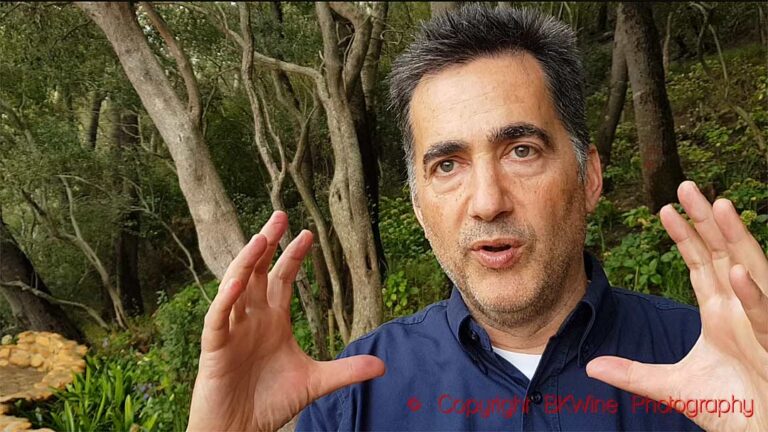
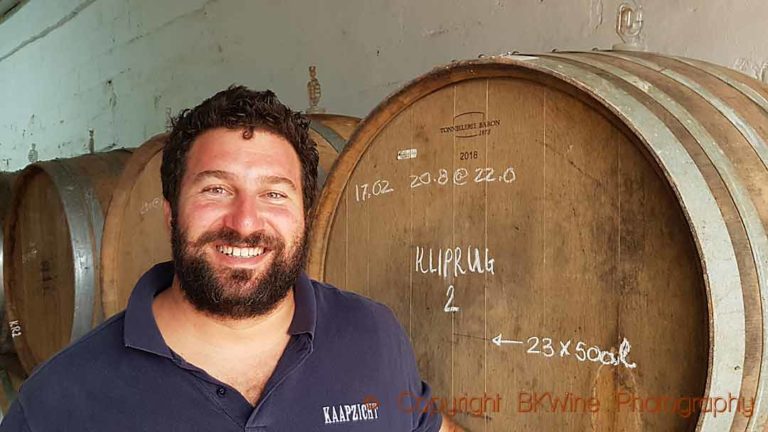
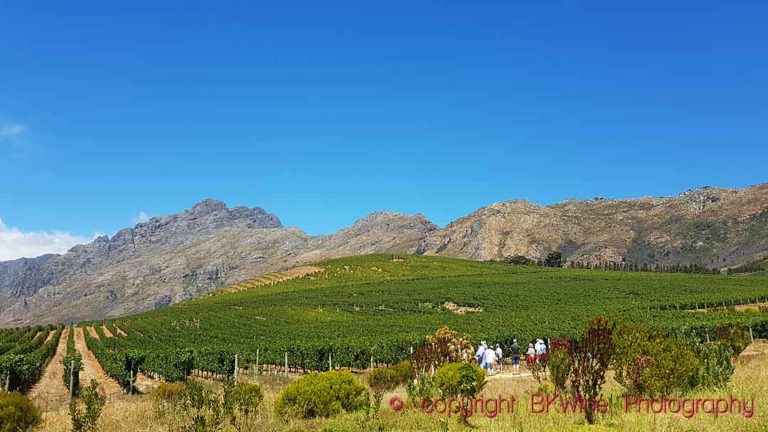




One Response